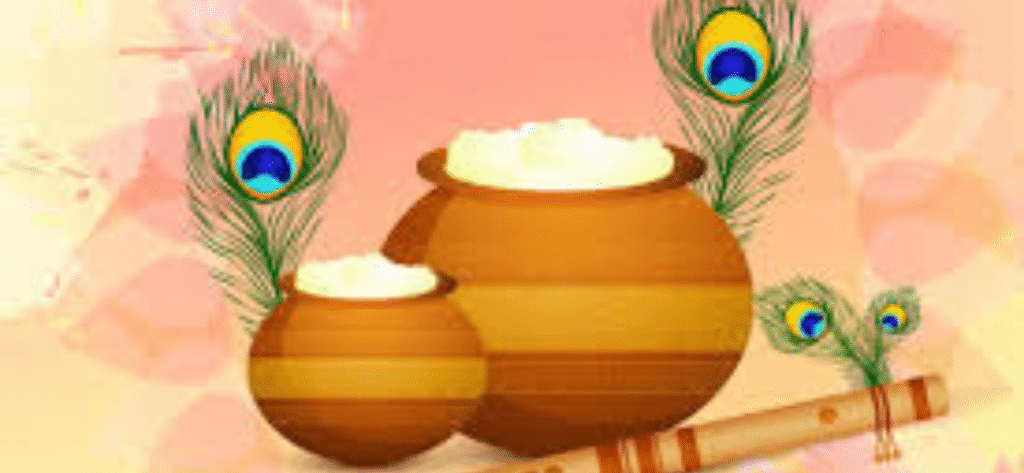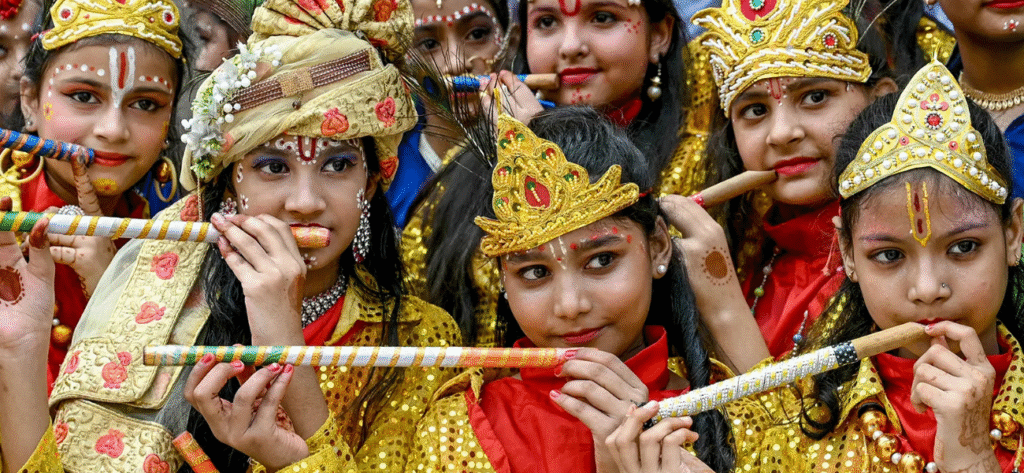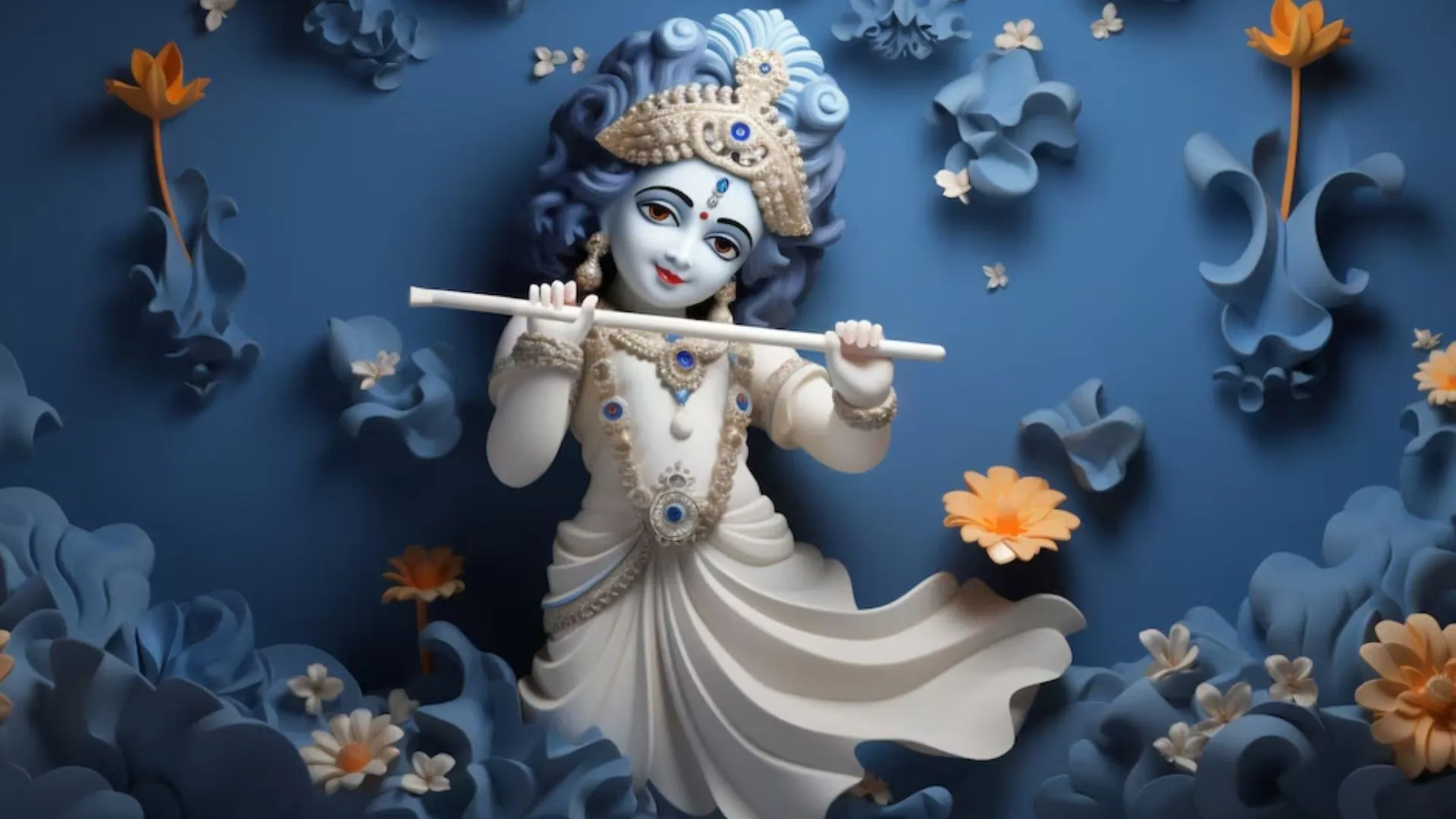The Divine Celebration of Lord Krishna’s Birth
Introduction
Janmashtami, also known as Krishna Janmashtami or Gokulashtami, is a vibrant Hindu festival that celebrates the birth of Lord Krishna — the eighth incarnation of Lord Vishnu. It usually falls in the month of August or September, on the eighth day (Ashtami) of the Krishna Paksha in the month of Bhadrapada.

Why is Janmashtami Celebrated?
Lord Krishna was born to protect dharma and destroy evil. His birth is seen as the triumph of good over evil. According to Hindu mythology, he was born in a prison cell at midnight, in the city of Mathura, to Devaki and Vasudeva, amidst darkness and danger. His childhood and life stories are full of miracles, divine plays (leelas), and teachings that continue to guide millions today.
How is Janmashtami Celebrated?
Midnight Celebrations
Devotees observe fasts throughout the day and break it only at midnight, the time of Lord Krishna’s birth. Temples and homes are beautifully decorated with flowers, lights, and Jhankis (tableaux) depicting Krishna’s life events.
Dahi Handi
In Maharashtra and other parts of India, the Dahi Handi event is a major attraction. Young boys form human pyramids to break an earthen pot filled with curd or butter, symbolizing Krishna’s love for stealing butter.
Bhajans and Dramas
Devotional songs, dance performances, and plays based on Krishna’s childhood (like Rasleela) are performed in temples and cultural programs.
The Spiritual Significance
Janmashtami is more than just a celebration. It’s a reminder of devotion, righteousness, and love. People reflect on Krishna’s teachings in the Bhagavad Gita, which emphasize duty without attachment, love without expectation, and surrender to God’s will.


Leave a Reply